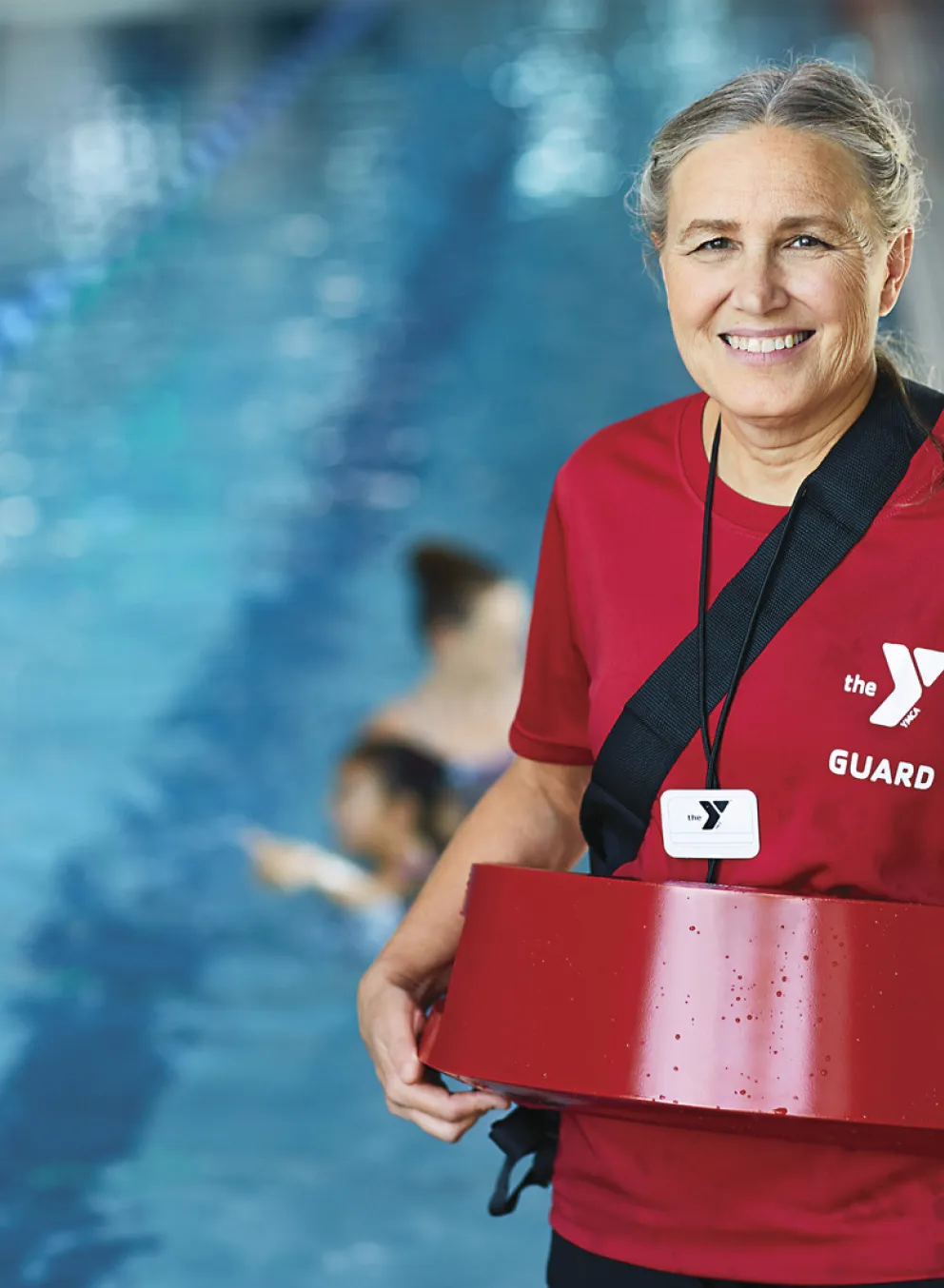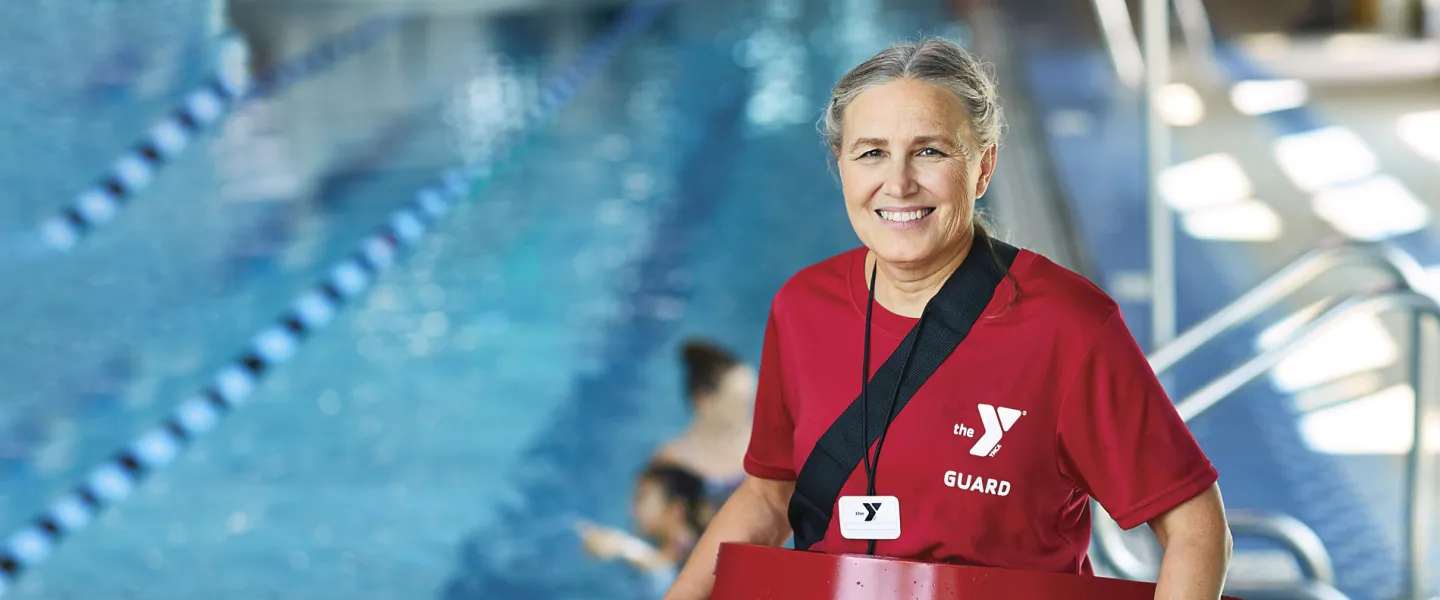WHY BECOME A LIFEGUARD? Lifeguarding is not only a fun job, but it's a great way to develop leadership, decision making and communication skills. Certified Lifeguards are leaders in our pools and waterfronts and lifeguards help prevent injuries and are first responders. It's the perfect job for high school students, retirees, stay at home parents, and college, gap year, and CCP students.
LIFEGUARD CERTIFICATION
Become a Certified Lifeguard and Make a Real Difference in Your Community
Looking for Lifeguard classes in Lake County, Ohio? The Lake County YMCA proudly offers American Red Cross Lifeguard Training, one of the nation’s most trusted and respected certification programs. Whether you’re looking to start a meaningful job, learn life-saving skills, or prepare for a career in aquatics, our Red Cross Lifeguard Course equips you with everything you need to keep swimmers safe in and around the water.
Our comprehensive lifeguard certification program includes water rescue skills, CPR/AED training, first aid, emergency response, and professional lifeguard responsibility training. Participants who successfully complete all course requirements receive an American Red Cross Lifeguarding certification valid for two years.
⭐ What is Red Cross Lifeguard Training?
Red Cross Lifeguard Training is a nationally recognized program that prepares individuals with the knowledge and skills to prevent, recognize, and respond to aquatic emergencies. This course teaches participants how to:
Perform water rescues in a variety of situations
Provide emergency care, including CPR, AED use, and First Aid
Prevent accidents through surveillance and safety protocols
Manage aquatic environments and respond to emergencies professionally
Work as part of a team to ensure the safety of all swimmers
Maintain safe pool environments and enforce facility rules
The Red Cross curriculum is widely accepted by employers nationwide, making this an excellent certification for teens, college students, teachers, coaches, and anyone interested in aquatic safety.
RED CROSS LIFEGUARD CERTIFICATION
Red Cross Lifeguard Certificate, Professional CPR/AED and First Aid
- Classes are a blended approach of eLearning and in-person
- 100% participation is REQUIRED
- Basic Life Support (CPR/AED for the Professional Rescuer)
- Basic First Aid
- Classroom Sessions
- Pool/Water Skills Time
- eLearning Time
- Classroom/ Water Skills: 21.5 Hours
- e-Learning: 6 Hours
- Total Time: 27.5 Hours
- Must be at least 15 years of age (proof required) by the last day of the class
- Successfully complete the two prerequisite swimming skills evaluations:
Prerequisite 1: Complete a swim-tread-swim sequence without stopping to rest:
- Jump into the water and totally submerge, resurface then swim 150 yards using the front crawl, breaststroke or a combination of both. (Swimming on the back or side is not permitted. Swim goggles are allowed.)
- Maintain position at the surface of the water for 2 minutes by treading water using only the legs.
- Swim 50 yards using the front crawl, breaststroke or a combination of both.
Prerequisite 2: Complete a timed event within 1 minute, 40 seconds:
- Starting in the water, swim 20 yards. (The face may be in or out of the water. Swim goggles are not allowed.)
- Surface dive (feet-first or head-first) to a depth of 7 – 10 feet to retrieve a 10-pound object.
- Return to the surface and swim 20 yards on the back to return to the starting point, holding the object at the surface with both hands and keeping the face out at or near the surface.
- Exit the water without using a ladder or steps.

